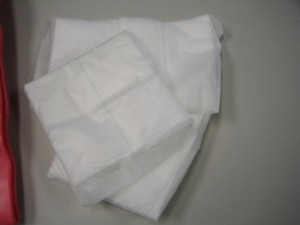An infected wound occurs when an open wound is infected by a microorganism. These microorganisms can range from a bacterium, virus, or parasite. The microorganisms enter the open wound, where it then invades and multiples inside the body. Aside from worsening the wound and inhibiting its healing due to more inflammation, an infection to the wound may spread to the whole body through the blood or lymphatic vessels. This is called a systemic infection, as opposed to a localized infection where the infection stays in the area of origin.
The most common culprit is the bacteria, specifically the Staphylococcus aureus and other Staph bacterium, which is part of the normal flora of the skin. It does not usually cause harm unless it enters an open wound. Once the protective barrier of the skin is broken, the normal flora can colonize the open wound. Moreover, not all bacteria are bad and invasive. There are plenty of bacteria found in the large intestine that are part of the normal flora and actually benefit the body. It should also be important to know that the bacteria may also come from external environment.
An infected wound should always be checked by a medical practitioner to avoid complications from developing. Although an infected wound is not always a medical emergency, it is best to seek medical attention.
Risk Factors of Infected Wound
There are certain individuals who are more at risk for getting an infected wound, due to their medical conditions or lifestyle. These include:
- Elderly and/or diabetes: due to decreased immune functions
- Smokers and/ or heart condition: due to poor blood supply to the wound
- Presence of dead tissue or any foreign material on the wound
- Poor hygiene
- Poor wound dressing techniques
Signs and Symptoms of Infected Wound
In some cases of infected wound, the symptoms remain subclinical where no symptoms manifest. But it may also be clinical, where the symptoms show. The common signs and symptoms of an infected wound that should be watched out for include:
- Increased redness
- Swelling
- Increased or sustained pain
- Foul-smelling pus discharge that is green, yellow or brownish in color
- Fever of more than 100°F
- Increased pulse rate
- Lump in the armpit or groin upon palpitation
How to Prevent an Infected Wound

The necessary treatment for an infected wound would depend on its severity, location and how extensive the wound is. The health of the individual should also be taken into consideration. As always, prevention is better than cure. Once an individual has an open wound, there are several ways to help prevent it from becoming an open wound. The following tips do not substitute for first aid training:
- After bleeding is controlled, wash the wound with soap and warm water.
- Apply mild antiseptic solution.
- Cover with sterile dressing and bandage properly. Change the dressing daily.
- If there is any object lodged on the skin, wait for the physician to remove it.
- Try to elevate the injured part above the individual’s heart level to decrease swelling.
To learn how to properly manage an open wound and avoid infections, enroll in First Aid Training.
An infected wound, commonly by a bacterium, would worsen the wound and inhibit healing. Treatment for an infected wound depends on severity, location and how extensive it is.
